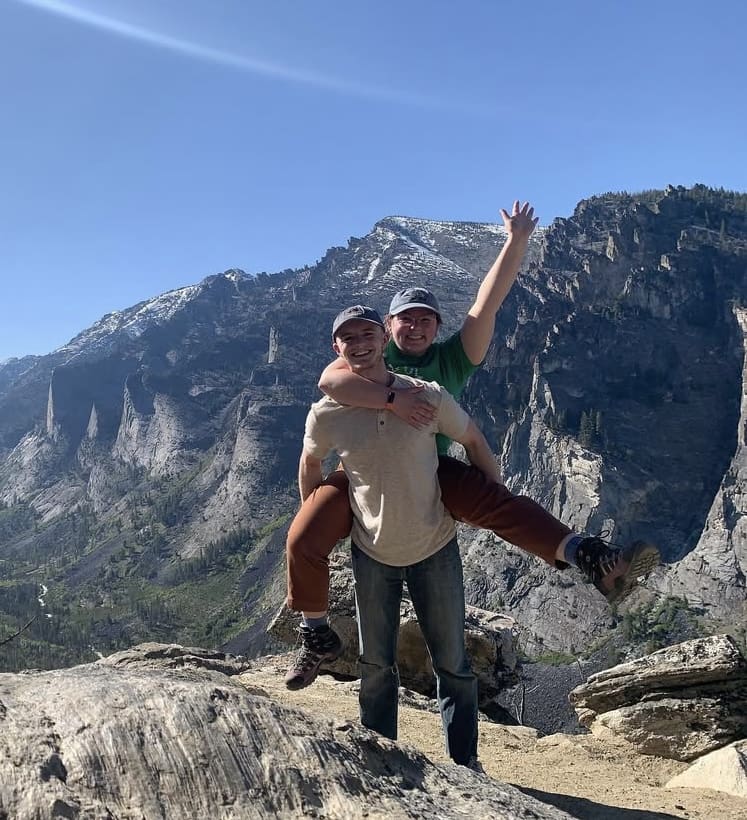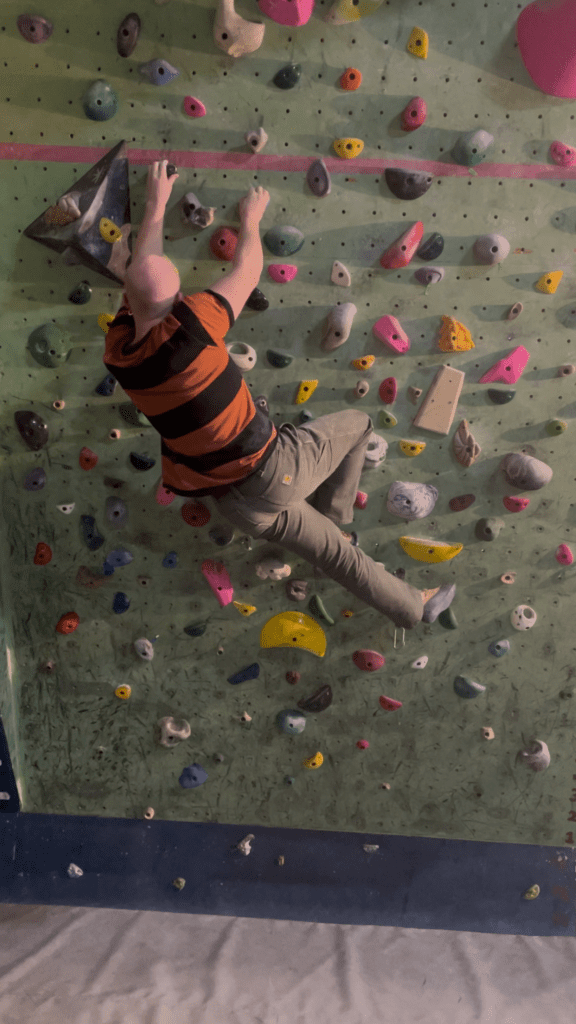You arrive at the climbing gym, chalk bag ready, psyched through the roof, eager to finally send that elusive project and maybe even float around the wall for a bit. You warm up, stretch out your shoulders, shake off the day’s stress, and pull onto your usual warm-up climb. Oh no. Suddenly, every move feels heavy. Your feet pop off holds you usually dance across, and your arms feel drained before you even get into the crux.
You drop off, shake out, and tell yourself it was just a rough start. But as you hop on problem after problem, the same thing keeps happening. Your energy isn’t there, and nothing feels like it should. You’ve been struck by what climbers call a “high gravity day.” We’ve all had them, and we all know how discouraging they can feel.
But what if those high-gravity days stop being occasional?
What if every session feels harder than the last? What if, no matter how hard you try, you can’t seem to find that “strong day” you remember? When that starts happening, it isn’t just a fluke anymore. It’s often your body telling you something important: you’re carrying fatigue you haven’t fully recovered from. And believe it or not, the solution might not be to climb harder, but to climb less.
Why Climbing More Isn’t Always Better
In climbing—and honestly, in almost every sport—there’s a deeply ingrained belief: if you just keep training, if you just keep pushing, you’ll get stronger. And in the short term, there’s truth to it. Consistent, progressive overload is how our bodies adapt.
But there’s a catch: those gains don’t happen while you’re actually on the wall. They happen after, when your body recovers, rebuilds, and adapts to handle the next challenge. If you keep training without allowing for real recovery, your body doesn’t get that chance. Instead, fatigue accumulates. You start digging what coaches call a “recovery hole”—a deficit you can’t fill just by sleeping an extra hour or taking a single rest day.
The result? Sessions feel flat, skin tears faster, your fingers feel tweaky, and mentally you start to burn out. Worst case: you get injured.
Enter: The Deload Week
When you keep piling on volume and intensity without a chance for your body to fully catch up, it’s time for something different: a deload week.
A deload isn’t the same as a week entirely off the wall. It’s not about sitting on the couch, though sometimes that can be useful too! Instead, it’s about climbing and training at a fraction of your normal volume and intensity. Think of it as active recovery: you’re still moving, still keeping the motor running, but giving your body space to repair, adapt, and come back stronger.
During a deload week, your sessions might look like this:
Social climbing: climb with friends, laugh a lot, and don’t worry about sends.
Lower intensity climbs: stick to routes and problems well below your limit. If V5 is your max, spend your time on V2–V3.
Fewer attempts and shorter sessions: instead of spending three hours in the gym, keep it to an hour or so.
More skills work: practice footwork drills, silent feet, or route reading. Learn a new belay technique, or coach a friend.

Why Deloads Work
It can feel counterintuitive—after all, you’ve been working so hard, why back off now? But deloads are powerful for a few key reasons:
- They let your muscles, tendons, and connective tissues recover.
Climbing is incredibly demanding on small muscles, tendons, and ligaments, which recover slower than larger muscle groups. Without a deload, micro-injuries can accumulate and lead to overuse injuries. - They reset your nervous system.
Constant high-intensity climbing taxes your central nervous system. A deload helps reduce that strain so you feel snappier and more explosive afterward. - They sharpen your mental game.
Climbing hard week after week can drain motivation and confidence. Taking a step back helps bring back excitement and fun. - They reveal your gains.
When you’re constantly fatigued, it can mask the strength and technique improvements you’ve built. After a deload, you might surprise yourself by sending projects that felt impossible before.
How Often Should You Deload for Climbing?
There’s no single answer—it depends on your training volume, intensity, age, and recovery capacity. But here are a few rough guidelines:
- If you’re training seriously (4–5 days a week, structured sessions): deload every 4–6 weeks.
- You’re more casual but still climbing regularly (2–3 days a week): A deload every 6–8 weeks can still help.
- If you feel persistent fatigue, pain, or a drop in performance: consider starting a deload immediately, even if you’re “off schedule.”
Common Deload Mistakes
Even experienced climbers make these:
- Skipping the deload because they “feel good” halfway through.
Often, by day three or four of climbing less, you’ll feel amazing. That’s the point—don’t ruin it by going hard too soon. - Turning it into a complete rest week unintentionally.
Keep moving gently; active recovery is better for most people than total rest. - Treating it as optional.
It might feel like you’re losing progress, but skipping deloads almost always catches up to you later.

Deloads in Real Life
Imagine you’ve just finished a tough 6-week training block: campus board sessions, limit bouldering, and lots of projecting. You’ve noticed your fingers feel sore even before you warm up, and you can’t quite finish problems that were going last week.
Instead of pushing harder, you take a deload:
- Two short sessions in the gym that week, only doing easy routes.
- A day outside on real rock, just enjoying movement, no projecting.
- A couple days of light mobility work and maybe a hike.
The next week? You’re likely to feel stronger, more motivated, and ready to build on what you’ve trained.
Need Help with your climbing?
If you’re serious about climbing stronger—and smarter—deloads should be part of your plan. But figuring out exactly when and how to do them can be tricky. That’s where we come in.
At Summit Strength and Fitness, our coaches can help design a training plan that includes deloads tailored to your goals, body, and schedule. Whether you’re projecting your first V5 or training for a big alpine objective, planned recovery isn’t just helpful—it’s essential.
Final Thoughts
Climbing less might feel wrong. After all, we climb because we love it. But strength doesn’t come just from hanging onto holds; it comes from letting your body rebuild after the effort.
So next time you’re stuck in a rut, consider it might not be that you’re not climbing enough—but that you haven’t let yourself rest. Trust the process, embrace the deload, and watch how climbing less can actually make you stronger.


